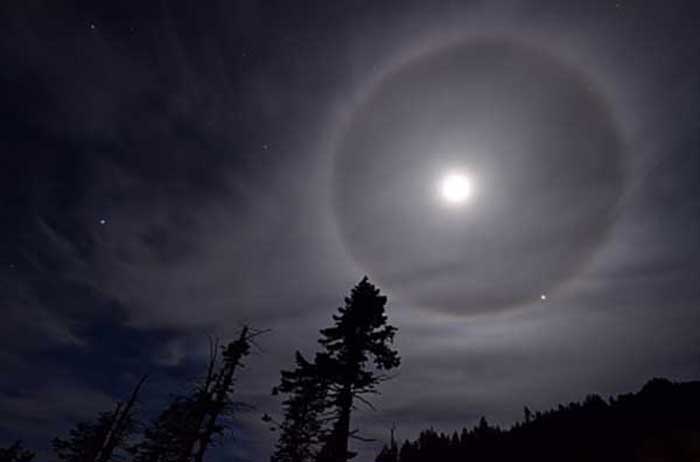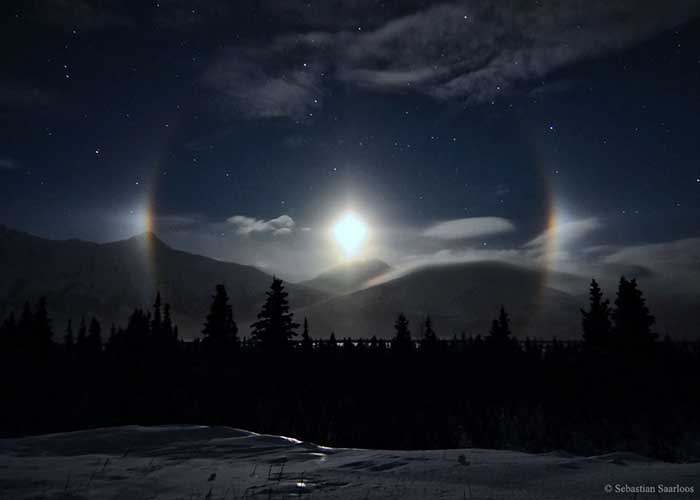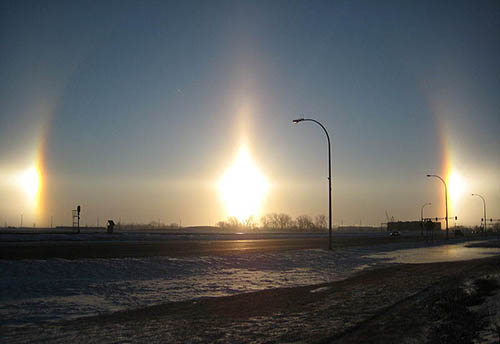

A moon dog, moondog, or mock moon, (scientific name paraselene, meaning "beside the moon") is a relatively rare bright circular spot on a lunar halo caused by the refraction of moonlight by hexagonal-plate-shaped ice crystals in cirrus or cirrostratus clouds.
Moon dogs appear as part of the 22° halo, roughly 10 Moon diameters outside the Moon. They are exactly analogous to sun dogs, but are rarer because the Moon must be bright, about quarter moon or more, for the moon dogs to be observed. Moon dogs show little color to the unaided human eye because their light is not bright enough to activate the cone cells.

Alaskan Moondogs
APOD - March 21, 2016Moonlight illuminates a snowy scene in this night land and skyscape made on January 26, 2013 from Lower Miller Creek, Alaska, USA. Overexposed near the mountainous western horizon is the first quarter Moon itself, surrounded by an icy halo and flanked left and right by moondogs. Sometimes called mock moons, a more scientific name for the luminous apparitions is paraselenae (plural). Analogous to a sundog or parhelion, a paraselene is produced by moonlight refracted through thin, hexagonal, plate-shaped ice crystals. As determined by the crystal geometry, paraselenae are seen at an angle of 22 degrees or more from the Moon. Compared to the bright lunar disk, paraselenae are faint and easier to spot when the Moon is low.

Sun Dogs